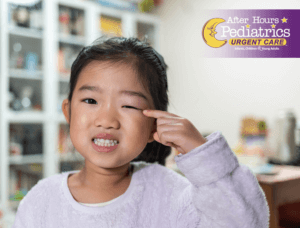
By: Deepa Ravi, MD, FAAP
South Florida Medical Director, After Hours Pediatrics Urgent Care
Pink eye, also called conjunctivitis, is an inflammation that includes reddening or swelling of the thin tissue covering the white part of the eye as well as the inside of the eyelids, specifically the lower lid.
There are several causes and related symptoms of pinkeye:
The incubation period for pink eye – the time between being exposed to the disease and when symptoms start – can vary depending on the type of pink eye.
Conjunctivitis is usually spread when hands become contaminated by direct contact with discharge from an infected eye, or by touching other surfaces that have been contaminated by respiratory tract secretions and gets into the child’s eyes.
The best method for preventing the spread of pink eye—and for staying healthy in general—is proper hand hygiene!
If your child has symptoms of pink eye, and needs to be seen by a provider, we accept walk-in patients every day of the week. Find our locations and hours.
ATTENTION: For questions or concerns regarding billing or record releases before the date of 10/6/2025, please call 844.277.5406 or email basepointe_cl_patient_services@teamhealth.com